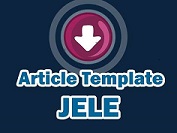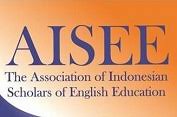DIGITAL TOOLS IN ESSAY WRITING: PERSPECTIVES FROM ENGLISH EDUCATION STUDENTS
DOI:
https://doi.org/10.36706/jele.v12i1.43Keywords:
essay writing, grammar checker, plagiarism checker, translation tool, paraphrasing toolAbstract
This study explores the use of technological writing tools in the essay-writing process, focusing on how these tools help address common challenges such as grammatical errors, plagiarism, translation, and paraphrasing. It investigates the perceptions of sixth-semester students in an English Education Study Program regarding the use of grammar checkers, plagiarism detectors, translation tools, and paraphrasing tools within the context of an essay writing course. A cross-sectional survey design was employed, and data were collected through structured questionnaires. The responses were statistically analysed using descriptive analysis methods in SPSS to identify usage patterns and student attitudes. The results show that students generally have positive views toward the use of technological tools, with most reporting that these tools assist them in overcoming various writing-related difficulties. The findings also indicate that students make use of a variety of tools, depending on their specific needs. The study recommends further research into the pedagogical integration of such tools in academic writing instruction.
References
Agussani, A., & Ansari, K. (2020). The Approach to Indonesian Language and Literature Curriculum in the Industrial Revolution Era 4.0 and Society 5.01. Colloquium International Postgraduateof University Muhammadiyah Sumatera Utara, January 2020, 1–11. http://publikasiilmiah.umsu.ac.id/index.php/publikasi-ilmiah/article/view/245
Ariyanti, A. (2016). Shaping Students’ Writing Skills: The Study of Fundamental Aspects in Mastering Academic Writing. Indonesian Journal of EFL and Linguistics, 1(1), 63–77. https://doi.org/10.21462/ijefll.v1i1.5
Ariyanti, A., & Fitriana, R. (2017). E FL Students’ Difficulties and Needs in Essay Writing A. Ariyanti 1 , Rinda Fitriana 1 1. Advances in Social Science, Education and Humanities Research (ASSEHR), 158(Ictte), 111–121.
Axelina, M., & Setiawan, A. (2017). Students’ Perception on the Use of Google Translate. JUORNAL BEGINNER EDUCATIION (BEjo), 1–14.
Broughton, G., Christophe, B., Roger, F., Petter, H., & Anita, P. (1980). Teaching English as a Foreign Language. In London: Routledge and Kegan Paul (Vol. 4, Issue 1).
Bulqiyah, S., Mahbub, M. A., & Nugraheni, D. A. (2021). Investigating writing difficulties in essay writing: Tertiary students’ perspectives. English Language Teaching Educational Journal, 4(1), 61. https://doi.org/10.12928/eltej.v4i1.2371
Carrió-Pastor, M. L. (2016). Technology Implementation in Second Language Teaching and Translation Studies: New Tools, New Approaches. In International Journal of Applied Linguistics (Vol. 28, Issue 2).
Cavaleri, M., & Dianati, S. (2016). You want me to check your grammar again? The usefulness of an online grammar checker as perceived by students. Journal of Academic Language & Learning, 10(1), 223.
Chandere, V., Satish, S., & Lakshminarayanan, R. (2021). Online Plagiarism Detection Tools in the Digital Age: A Review. Annals of the Romanian Society for Cell Biology, 25(1), 7110–7119. http://annalsofrscb.ro
Cresswell, J. W. (2012). Planning, Conducting, and Evaluating Quantitative and Qualitative Research Fourth Edition. https://www.ptonline.com/articles/how-to-get-better-mfi-results
Dewi, U. (2022). Grammarly as Automated Writing Evaluation: Its Effectiveness from EFL Students’ Perception. 78(May), 1–15. https://doi.org/10.21512/lc.v16i2.8315
Eryansyah, E., Erlina, E., Fiftinova, & Nurweni, A. (2019). EFL Students’ Needs of Digital Literacy to Meet the Demands of 21stCentury Skills. Online-Journal.Unja.Ac.Id, 3(2), 2580–5711. https://online-journal.unja.ac.id/irje/article/view/8297
Fajriah, Z. D. (2022). Efl students use of internet-based applications in thesis writing: a tam perspective. UNIVERSITAS ISLAM NEGERI AR-RANIRY BANDA ACEH.
Fitriana, K., & Nurazni, L. (2022). Exploring Students’ Perception of Using Grammarly to Check Grammar in Their Writing. JET (Journal of English Teaching), 8(1), 15–25. https://doi.org/10.33541/jet.v8i1.3044
Gain, A., Rao, M., & Bhat, K. S. (2019). Usage of grammarly - online grammar and spelling checker tool at the health sciences library, Manipal Academy of Higher Education, Manipal: A Study. Library Philosophy and Practice, 2019.
Gilakjani, A. P. (2017). A Review of the Literature on the Integration of Technology into the Learning and Teaching of English Language Skills. International Journal of English Linguistics, 7(5), 95. https://doi.org/10.5539/ijel.v7n5p95
Graham-Matheson, L., & Starr, S. (2013). Is it cheating or learning the craft of writing? Using Turnitin to help students avoid plagiarism. Research in Learning Technology, 21(1063519), 1–13. https://doi.org/10.3402/rlt.v21i0.17218
Hanafizadeh, P., Ghandchi, S., & Asgarimehr, M. (2017). Impact of Information Technology on Lifestyle. International Journal of Virtual Communities and Social Networking, 9(2), 1–23. https://doi.org/10.4018/ijvcsn.2017040101
Ilma, R. (2021). Student’ Perception of Machine Translation Application in Enchaning English Literacy of Tridinanti University. ELT in Asia in the Digital Era: Global Citizenship and Identity STUDENTS’, Unedited, 573–582.
Inayah, N., & Sulistyaningrum, S. D. (2021). Employing Online Paraphrasing Tools to Overcome Students’ Difficulties in Paraphrasing. English Language Education Journal, 2(1), 52–59.
Irvin, L. L. (2010). Research and Study Skills: Academic Writing. Writing Spaces: Readings on Writing, 1, 3–16. http://dx.doi.org/10.1016/j.tws.2012.02.007%0Ahttp://wlv.summon.serialssolutions.com/link/0/eLvHCXMwY2BQSEkEtouTgTVdcqJRaopJErC_lppilpaWZGKQYmhuloZy0j5Sae4myiDp5hri7KFbnlMWDx2-iDe1MAB24AzFGFiA_eFUAFSeF1w%0Ahttp://dx.doi.org/10.6092/unibo/amsacta/2393
Isnawati, U. M., Badriyah, N., & Lamongan, U. I. (2021). PELATIHAN PARAFRASE PADA MAHASISWA : UPAYA MENGHINDARI PLAGIARISME. 1(3), 341–349.
Karimi, E. M., & Amin, M. Y. M. (2019). Students` Attitude toward Effectiveness of Anti-Plagiarism Software, Turnitin. Applied Linguistics Research Journal, November 2019. https://doi.org/10.14744/alrj.2019.66376
Kastberg, P., & Andersson, T. B. (2012). Machine Translation Tools - Tools of the Translator’s Trade. Communication & Language at Work, 1(1), 34. https://doi.org/10.7146/claw.v1i1.7238
Katleyana, S. (2020). the Perception of English Education Study Program of Sriwijaya University Students Towards the Use of Digital Writing Tools in …. https://repository.unsri.ac.id/32225/
Kurniati, E. Y. (2022). Post- Graduate Students ’ Perceptions of Quillbot Utilization in English Academic Writing Class. 7(3), 437–451.
Kurniati, E. Y., & Fithriani, R. (2022). Post-Graduate Students’ Perceptions of Quillbot Utilization in English Academic Writing Class. Journal of English Language Teaching and Linguistics, 7(3), 437. https://doi.org/10.21462/jeltl.v7i3.852
Kustini, T. (2021). Kekeliruan Mahasiswa dalam Menulis Artikel Ilmiah: Studi Kasus dalam Mata Kuliah Academic Reading and Writing. Prosiding Seminar Nasional Pendidikan, 3, 111–117.
Lailika, H. I. (2019). Students’ Perceptions of the Use of Grammarly As an Online Grammar Checker in Thesis Writing. http://digilib.uinsby.ac.id/34607/
Mubarok, N. M. F. A., & Syafi’i, A. (2020). Grammarly: An Online EFL Writing Companion. ELTICS : Journal of English Language Teaching and English Linguistics, 5(2). https://doi.org/10.31316/eltics.v5i2.912
Nova, M., & Utami, W. H. (2018). Efl Students’ Perception of Turnitin for Detecting Plagiarism on Academic Writing. International Journal of Education, 10(2), 141–148. http://dx.doi.org/
Oshima, H., & Hogue, A. (2006). Writing Academic English Fourth Edition. https://www.ptonline.com/articles/how-to-get-better-mfi-results
Rusdianto, G. (2022). Journal of English Language Teaching An Analysis o f Students ’ Ability in Paraphrasing a Paragraph at the English Department Universitas Negeri Padang. 11(3), 314–323. https://doi.org/10.24036/jelt.v10i2.112479
Stanciu, C., Coman, C., Gabriel, T., & Bularca, M. C. (2020). Online Teaching and Learning in Higher Education during the Coronavirus Pandemic : Students ’ Perspective.
Starkey, L. (2004). How to Write Great Essays (1st ed.). Learning Express. www.learnatest.com
Sujarwo. (2020). Students’ Perceptions of Using Machine Translation Tools In the EFL Classroom. 5, 230–241.
Sulistyaningrum, S. D. (2021). Utilizing Online Paraphrasing Tools to Overcome Students’ Paraphrasing Difficulties in Literature Reviews. Journal of English Language Studies, 6(2), 229. https://doi.org/10.30870/jels.v6i2.11582
Tarmiji, Basyah, M. N., & Yunus, M. (2016). Persepsi Siswa Terhadap Kesiapan Guru dalam Proses Pembelajaran (Studi Pada SMP Negeri 18 Banda Aceh). Jurnal Ilmiah Mahasiswa Pendidikan Kewarganegaraan Unsyiah, 1(1), 41–48.
Tarsan, V., Kandang, A., & Helmon, A. (2021). Students Perception Towards the Application of Grammarly: the Automatic Grammar Checker in Writing Narrative Text in the Third Semester At Stkip Ypup Makassar. JIPD (Jurnal Inovasi Pendidikan Dasar), 5(2), 123–133. https://doi.org/10.36928/jipd.v5i2.858
Whyte, S. (2017). Digital tools ITILT mini-guide Interactive Teaching in Languages with Technology. Digital Tools, 23. http://bit.ly/2h6ENUi
Yanti, M., & Meka, L. M. C. (2019). The students’ perception in using Google Translate as a media in translation class. Inacelt, 4432(November), 128–143. http://e-proceedings.iain-palangkaraya.ac.id/index.php/INACELT/article/view/89
Zheng, Q. (2021). Chinese University Students’ Perceptions of the Use and Effectiveness of Turnitin in EAP Writing. International Journal of TESOL Studies, 3(20), 40–54. https://doi.org/10.46451/ijts.2021.06.04
Downloads
Published
Issue
Section
License
Copyright (c) 2025 The Journal of English Literacy Education: The Teaching and Learning of English as A Foreign Language

This work is licensed under a Creative Commons Attribution-ShareAlike 4.0 International License.













